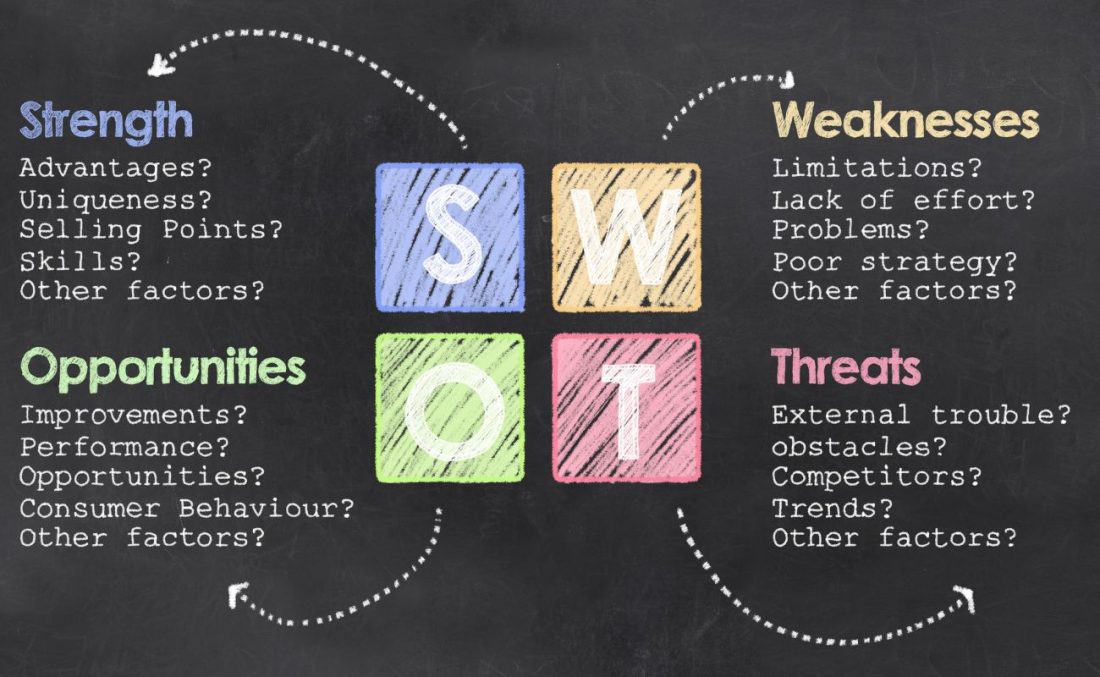Sourcing from China: How to Perform a SWOT Analysis
October 23, 2025
 If you’re sourcing from China, you understand the importance of management and you are probably already evaluating your systems and processes on a regular basis to ensure that they are running optimally and according to your plans and your vision. (If you’re not, you really should.)
If you’re sourcing from China, you understand the importance of management and you are probably already evaluating your systems and processes on a regular basis to ensure that they are running optimally and according to your plans and your vision. (If you’re not, you really should.)
SWOT stands for “Strengths, Weaknesses, Opportunities and Threats”. The first two: Strengths and Weaknesses are things that you control. The other two: Opportunities and Threats are things you cannot control but you should be aware of in your China supply chain management. A SWOT analysis is a process during which you review (usually with your management team) your SWOT systematically. Generally speaking, the more static your business and your circumstances, the less you need to do a SWOT analysis. Conversely, the more things change and the bigger the impact of these changes on your business, the more important it is to do a SWOT analysis.
Given the fact that things usually change fast in China, both in terms of suppliers (new and better ones coming up all the time) and in terms of policies, one would think that a SWOT analysis would make sense for most importers sourcing from China. In order to make sure your China supply chain runs smoothly without major unforeseen disruptions you should be doing a SWOT analysis on your supply chain once every quarter.
Below is a summary of the steps and an outline of how to execute your SWOT analysis:
- Strengths: List them. What makes you stand out from your competition? What did you do last quarter to improve? Ask yourself what you can do next quarter to make things even better. The key to successful supply chain management in China is knowing that you can always improve, even when you’ve done well. Identifying where the strengths lie in your supply chain will also help to identify your weaknesses in the next step.
- Weaknesses: List them too. Be honest, look at your supply chain from a competitor’s point of view. This is by far the most important. In order to stay competitive, you need to know your weaknesses. Knowing gets you one step closer to solving the problem. What did not go well in the first quarter? What challenges did you have and how are they related to your weaknesses? Making small improvements to eliminate these weaknesses, on a quarterly basis, can make a huge difference at the end of the year.
- Opportunities: What opportunities does the environment present while you are sourcing from China? Which ones are new? Evaluate how using these can give you an edge over your competitors. Think in terms of opportunities that can not only save you money, but also save you time and provide you with other advantages.
- Threats: What are the threats? Be specific and thorough. Think in terms of raw materials, freight, regulations, customers and competition. Are things changing that may hurt you? Make a list of these possible threats, and identify a solution for each. Are your competitors receiving a better price for the same goods? Are they receiving their goods early, in a timely, predictable fashion? Next, identify what steps you need to take to be a threat, not a victim. Do you need to benchmark more factories? Do you need to improve your logistics approach? Find specific ways to mitigate the risks.
A SWOT analysis does not take a lot of time, but it can really help your business. What are your views on SWOT analysis? How has it made your China supply chain management easier?
By Jocelyn Trigueros
Editor’s Note: This blog was originally published in April 2017.
